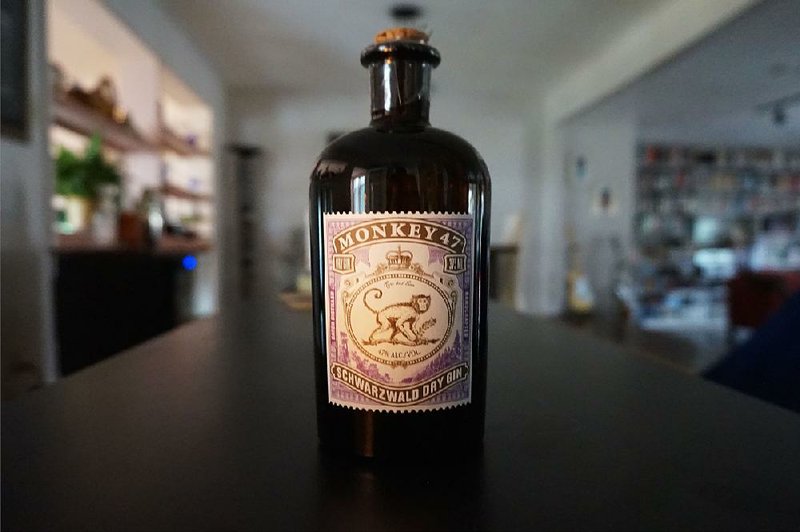The first time I drank gin
I thought it must be hair tonic.
-- Philip Levine, "Gin"
"My life is roughly speaking over. I sleep badly except occasionally in the morning. I get up late. I try to read my letters. I try to read the paper. I have some gin. I try to read the paper again. I have some more gin. I try to think about my autobiography, then I have some more gin and it's lunchtime. That's my life. It's ghastly."
-- Evelyn Waugh, in a letter to his future biographer
Christopher Sykes in 1964
Could any tiger
Drink martinis, smoke cigars,
And last as we do?
-- W.H. Auden, "Symmetries and Asymmetries"
Some of you are probably thinking: Again with the gin?
Well, yes. I have a problematic relationship with the stuff. It is the Jay Gatsby of the spirit world, concealing its criminal past behind a facade of genteel WASPishness. I would like to like it more than I do, for I understand it is a marker for refinement and good taste. It has so many bright and clever advocates. It comes in the prettiest bottles -- the iconic green Tanqueray bottle with its embedded red wax seal, the lucent amber orange of Saffron glowing through the clear cylinder, Hendrick's toffee-brown apothecary bottle. It seems to me an aspirational spirit, the sort of thing I would like to drink when I grow up.
(I think of good gin about the same way I think of a top-of-the-line Gibson Les Paul Custom guitar -- it possesses wonderful qualities that are completely wasted on me.)
Despite its Dutch roots -- it started life as "jenever," but dropped a couple of syllables as it assimilated into the better cupboards -- it is an anglophilic thing. It hardly seems to matter that gin killed a lot of English people during the 18th century, when surplus grain caused the prices to drop until their version of gin (so horrible that some distillers flavored their product with turpentine) was cheaper than beer. Londoners proceeded to guzzle it like beer, and some of them dropped dead after chugging a pint. No, gin drinkers would rather speak of Churchill, gesturing dismissively toward the vermouth as he stumbled wearily toward his easel, a black dog of depression nuzzling at his cigar hand. Plymouth Gin, served frigid, kept him moving through hell.
I don't mind the stuff, though I find myself bemused by the prejudices of gin-drinking friends. It seems sometimes that the stuff was invented to give them reason to sniff at vodka drinkers. Like the poet W.H. Auden -- whom the gin people claim as one of their own -- I can go either way with a martini. Mostly, I go with vodka, a prole move, I understand, but honest. The more fragrant floral gins are of no use to me. I've had the real expensive stuff and I guess I understand it. It has layers and textures and transitory flavors that light for a second on the tongue before disappearing into the ether. That's fine, if it's your thing, but I prefer something a bit meatier.
But not always. Gin goes well with tonic, although this isn't the season. I'm quite fond of Tanqueray Rangpur, which is technically a flavored gin (though the limes are distilled into the gin rather than infused) and therefore beneath the contempt of some of my gin-drinking buddies. It's just not the first bottle I reach for and not anything I'll ever be especially knowledgeable about. But I am gin-curious.
Which brings us to the handsome bottle in the photo. It's Monkey 47, in the rather obscure dry style, made from a pure molasses base spirit with a botanical mix that includes a lot of German elements you don't typically see in gin. It's relatively new to the United States, brand new to Arkansas and rather pricey at $45 per 375 ml. bottle (which, if you have trouble with math, works out to almost $100 per traditional-size bottle). It may well be worth it to some tipplers -- it's a very complicated mouthful. If the words of wine critic Robert Parker mean anything to you, he has called it "the greatest gin I have ever tasted."
Like most gins, Monkey 47 has a creation myth which may or may not be verifiable. It holds that in 1951, a British subject and former Royal Air Force pilot named Montgomery Collins (Commander Collins, in most tellings) moved to Germany's Black Forest where he opened a country guesthouse he called Zum wilden Affen -- the wild monkey.
While he was renovating the inn, Collins found an old wooden box containing a bottle with the words Max the Monkey -- Schwarzwald (Black Forest) Dry Gin and a sketch of a creature on the hand-lettered label. While the bottle was empty, there were also documents and photographs that included a recipe for the gin. A total of 47 botanicals, including cranberries, cardamom, cloves, nutmeg, almond, ginger, Ceylon cinnamon, licorice, bitter orange, lemon, spruce tips, lavender, iris, honeysuckle, blackberries, pomelo, lingonberry, sloe berries and sage, were called for, as was a specific Black Forest water source. (Par for the course, some of the ingredients remain secret.)
Commander Collins apparently evaporated some time in the early 1960s, but his gin was rediscovered nearly 50 years later and introduced commercially in Germany in 2010.
I don't know about that, but what I can tell you is it's not like any gin I've ever tasted -- less juniper than rosemary, and somehow redolent of the forest. It's an earthy sip, with a bit of sweet fruit in the finish. It's nice and, even at 94 proof, highly drinkable.
Email:
pmartin@arkansasonline.com
blooddirtangels.com
Style on 01/18/2015
